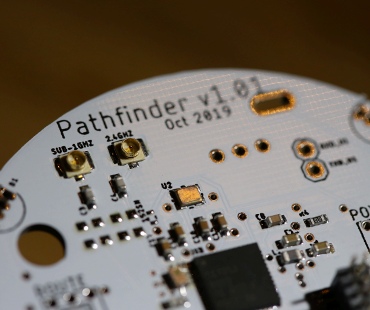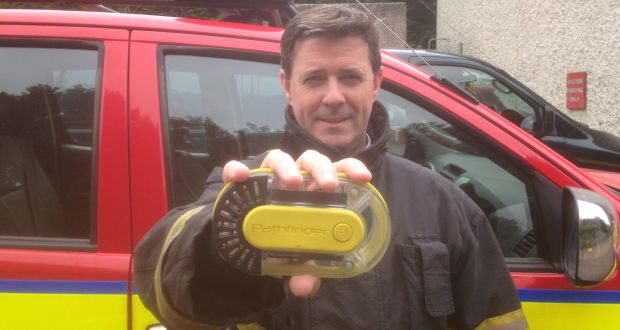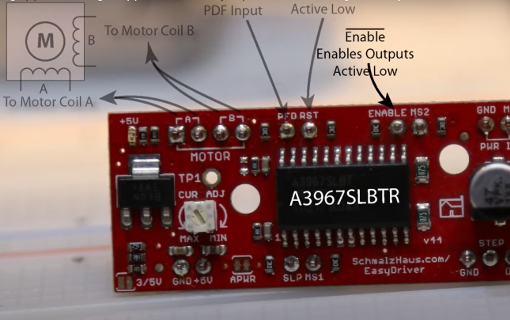
Pathfinder
-
START DATE
1 Mar, 2018
-
END DATE
30 Jun, 2022
-
FUNDED BY
Enterprise Ireland
DETAILS
Pathfinder I and Pathfinder II
PIs: Derek Molloy (Entwine), Conor Brennan (School of Electronic Engineering, DCU)
The Pathfinder project was funded under the Enterprise Ireland Commercialisation Fund and commenced in March 2018. The principal investigators have brought together a diverse, multidisciplinary team of researchers and industry professionals to develop a technology solution to address the number one capability gap as identified by the International Forum to Advance First Responder Innovation (IFAFRI), namely “the ability to know the location of responders and their proximity to risks and hazards in real time”.
Despite many researchers and companies having addressed this problem over the years there is still no commercially adopted solution. Many of the proposed solutions require a process of triangulation based on some aspect (usually signal strength) of RF wireless signals sent from devices located on the firefighters to receivers spatially distributed outside the building. Such systems suffer from a variety of impairments such as the difficulty of reliably relating received signal strength to firefighter receiver distance in non-line of sight paths and the increased signal loss incurred as the team penetrates deep into the building. Such impairments have meant that these solutions have not met the threshold of demonstrable reliability that would see their widespread adoption by practicing firefighters.
The Pathfinder system takes a related, but complementary, approach to the problem. Like the aforementioned solutions it too is based on using RF wireless signals to track teams within a building but with a number of important distinctions intended to make it more reliable given the safety critical nature of its deployment.

Firstly, rather than relying on external receivers, the fire-crew deploy a customised low power sensor mesh network as they progress through the building. Sensor devices (“pucks”) are fixed in place at intervals as the team searches the building along a specific pre-agreed route (teams often traverse the building while remaining in contact with the left or right walls for example). These pucks form a low-power sensor mesh network as they are deployed, which is capable of transmitting messages along its length (and ultimately to the Incident Commander outside). The search team wear mobile versions of these devices (called “beacons”).
Every time a mobile beacon passes within a threshold distance of a fixed puck a message is sent along the mesh network to the tablet operated by the Incident Commander outside the building. In addition the puck emits audio and visual cues when they are nearby, aiding them in their efforts to stay on track. This process of “proximity sensing” allows both the team and the Incident Commander to be kept informed at all times as to their relative progress along the trail of pucks.
In particular, one expects the team to encounter the pucks in reverse order when exiting the building along their search route and therefore one can quickly identify when the team has strayed from this path. The Pathfinder team uses the analogy of an “invisible rope” being laid along the search path which can be followed to return the team to safety or, if necessary, to guide searchers looking for a missing team. Indeed, Pathfinder is intended to replace the use of “guidelines”, actual physical ropes laid out by fire-crew members for this very purpose. The use of physical ropes in conditions of almost total darkness creates significant hazards in terms of fire-crew becoming entangled and a wireless version that offers similar functionality is thus an attractive option. It should be noted that the Pathfinder system does not purport to compute the actual physical, i.e. (x,y,z), location of the firecrew members1. Rather it records their relative progress along their search route into and back out of the building, information that is more useful to firefighters than simple (x,y,z) position. Given the relatively short distance between pucks this information is sufficient to support their safe exit from the building and, in an emergency, to direct rescue teams along the route to locate missing crew members (based on their last verified proximity).
An additional feature of the system is that the pucks can act as environmental sensors, monitoring, and reporting on local conditions. Alerts can be sent if, for example, a sudden spike in temperature is noted.
Google Drive often refuses to stream embedded videos if it dislikes your browser.
- Play on Google Drive
- Download video
-
Close popup
The Pathfinder technology development broadly took place in two phases. The first phase culminated in the development of a simple proof-of-concept initial prototype system which was demonstrated in April 2019 at the annual Fire Department Instructors Conference, the key international showcase for first-responder technology. This initial proof of concept system was functional but, being based on physically large launchpad development board technology, cumbersome and non-ergonomic. It comprised 5 pucks (housed in simple plastic housing) which communicated with each other and with one mobile beacon at 2.4GHz. Messages are sent via the mesh network to a prototype GUI running on a portable tablet. The second phase of development has subsequently focused on the design and development of a professionally deployable minimum viable product (MVP), informed by user feedback and based on a custom designed PCB and essential LEDs and sensors housed in an ergonomic robust industrial design. This has been implemented and tested and a further improved version, operating at 868MHz, is now undergoing field trials with Northern Ireland Fire and Rescue Service as part of Enterprise Ireland funded project.
Pathfinder in the news
Irish times article (July,2019)


